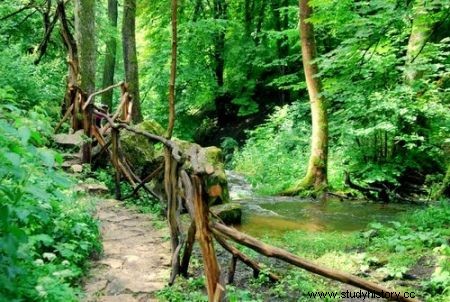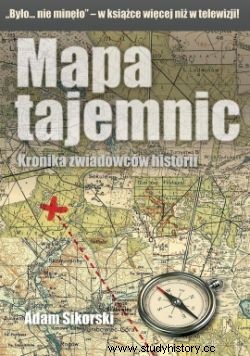Anglo-Saxon history books are full of stories about SS men and Nazi apparatchiks who buried various treasures in tunnels and caves in the last days of the war:gold, works of art, weapons ... But why should we get excited about what they did Teutons, if we had our own treasures? And the boys from the Home Army also hid them in the mines.
In June 1944, the biggest battle with partisans during the entire Second World War took place in the Solska Primeval Forest in the Zamość region. Three German divisions, numbering a total of thirty thousand soldiers, defeated the armed underground troops operating in the surrounding forests. This completely thwarted the plans of the Home Army, which wanted to take control of the region and welcome the Soviets pushing west from the position of hosts.
Meanwhile, as Adam Sikorski explains in the book "Map of Secrets", the appearance of the Soviets was so immediate that the outbreak of a general uprising in the Zamość region did not take place. Many partisans, together with the expulsion of the Germans, decided that the war was over (p. 137) . Hardly anyone was eager to continue the fight, while hundreds of various weapons were deposited in the AK warehouses. The commanding staff did not want to give this priceless equipment to the new occupant for any treasures in the world. On the other hand, destroying it seemed unwise. Because what if a revolt breaks out after a while?

The road to the adit led through Majdan Kasztelański ... (in the photo; photo:Magda O; source:Panoramio).
Finally, the decision was made - the weapon should be concealed, but as efficiently as possible. A special action started in mid-August 1944. For two days at Camp Woyny - located in the Great Swamp in the middle of the Solska Primeval Forest - the partisans cleaned and then covered with a thick layer of grease the discharge sten, brownings and MG. So they carried out "permanent maintenance" - on the one hand, ensuring that the weapon would remain operational even after a few years. On the other hand, it requires really thorough and long-lasting cleaning afterwards ...
The arsenal prepared in this way: was packed (...) into seventeen containers and wrapped with a tent tarpaulin. On a lunar summer night, through Kościelna Droga, Górecko Stare and Majdan Kasztelański, the heavily loaded carts first reached the railway line, then the Zamość-Józefów road and plunged into the forests hiding the drifts ("Map of Secrets," pp. 137-138) .

The soldiers of the Zamość AK (before they buried their weapons).
A few hundred meters from the target, Lieutenant of the Home Army Konrad Bartoszewski "Wir" - a man who gained fame by saving partisans from total slaughter during the battle in the Solska Forest - ordered the carts to be stopped. He sent the carters (who were probably from the local population), as well as most of the unit escorting the transport. Only the most faithful and trusted cadets, called "Varsovians", were left on the spot. Supposedly it has always been like this with similar operations (p. 138) . And no wonder - after all, the stakes were high.

The transfer of weapons to one of the many tunnels dotted with the forest near Biłgoraj took almost until dawn. "Varsovians":
They would lift heavy pipes and stack them in turn in two separate sidewalks. Finally, loads of plastic were placed in the "necks", or exits to the surface. Two eruptions struck the area and rubble covered the slope.
Only a dozen or so people have learned the location of the "treasury". Most of them did not live to see the end of the war. Bartoszewski survived, but he never let go of his lips. Anyway, maybe he just didn't remember which mine it was? Maybe as long as the commune lasted, he didn't want to remember? He died in 1987. And the mysterious tunnel near Biłgoraj has not been found until today.
Finally, one more reflection arises:Germans and Poles, faced with the end of the war, were getting rid of their valuables in a very similar way. They were equally discreet and obliterated their tracks. There are two differences:Poles hid what really belonged to them, not what they robbed. And more importantly, they never shot anyone in the back to keep their secrets safe. As you know, the Germans did it very often…
Source:
- Adam Sikorski, Map of secrets. Chronicle of History Scouts , Vesper 2012.
